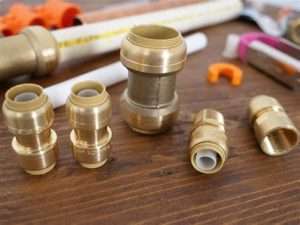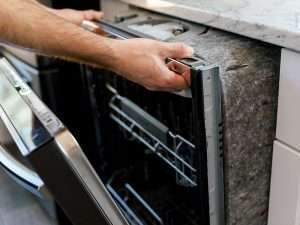The Benefits of Using a PEX Plumbing Manifold:
Efficient Water Distribution, Reduced Leaks, Easy Control, and Cost Savings

For homeowners seeking efficient and affordable plumbing solutions, the pex plumbing manifold stands out as a top choice. This revolutionary system offers a myriad of advantages. It’s a must-have for anyone wanting a streamlined, cost-effective, and reliable plumbing system. This blog post dives into the manifold world, exploring the benefits, installation process, and maintenance of a pex plumbing manifold. It’s designed to be an ultimate guide for those ready to upgrade their home plumbing system. It’s time to discover why the pex plumbing manifold is the future of home plumbing.
What is a PEX Plumbing Manifold?
Understanding PEX Plumbing
PEX plumbing is a modern and versatile plumbing system that has gained popularity in recent years. PEX stands for cross-linked polyethylene, which is a type of flexible plastic tubing. This innovative material is known for its durability, resistance to corrosion, and flexibility, making it an excellent choice for plumbing installations.
PEX plumbing systems offer several advantages over traditional copper or PVC pipes. They are easier and faster to install, require fewer fittings, and can be bent and shaped to fit around obstacles. PEX pipes also have excellent insulating properties, which can help reduce heat loss and prevent freezing in cold climates. Plus, they are less likely to burst in extreme temperatures compared to other types of pipes.
Definition of a Plumbing Manifold
Now that we have a basic understanding of PEX plumbing, let’s delve into the concept of a plumbing manifold. A plumbing manifold is a central distribution point in a PEX plumbing system. It serves as a control center for distributing water throughout a building or specific areas, such as individual floors or zones.
Think of a plumbing manifold as the heart of your plumbing system. It connects the main water supply line to multiple branches that feed various fixtures and appliances, such as faucets, showers, toilets, and washing machines. By using a manifold, you can easily control and isolate the flow of water to specific areas or fixtures, allowing for more efficient maintenance and troubleshooting.
A typical plumbing manifold consists of a main supply line, shut-off valves for each branch, and outlets for connecting the PEX pipes. The shut-off valves provide individual control over each branch, allowing you to shut off water to a specific fixture without affecting the rest of the system. This makes repairs or replacements much easier and minimizes disruptions to the entire plumbing system.
In addition to its practical benefits, a plumbing manifold also offers greater flexibility in designing and expanding your plumbing system. You can easily add or remove branches from the manifold as needed, making it a convenient solution for future renovations or additions to your property.
Overall, a plumbing manifold simplifies the distribution and control of water in a PEX plumbing system. It enhances the efficiency, reliability, and versatility of your plumbing system, providing you with peace of mind and convenience.
Remember, when considering a PEX plumbing manifold for your home or building, consult with a professional plumber to ensure proper installation and optimal performance.
Benefits of Using a PEX Plumbing Manifold
When it comes to plumbing systems, efficiency and reliability are key. One innovative solution that has gained popularity in recent years is the PEX plumbing manifold. This versatile component offers numerous benefits that make it a smart choice for any plumbing project. In this section, we will explore the advantages of using a PEX plumbing manifold, including efficient water distribution, reduced chance of leaks, easy control and access, and cost savings.
Efficient Water Distribution
A PEX plumbing manifold is designed to efficiently distribute water throughout a building. This system consists of a central manifold, which acts as a hub, and individual supply lines that connect to various fixtures and appliances. By utilizing separate lines for each outlet, the manifold ensures that water flows directly to each source without any loss in pressure or temperature.
This efficient water distribution has several advantages. Firstly, it eliminates the need for traditional branching systems, where multiple pipes converge into a single line. With a PEX manifold, each fixture has its own dedicated line, ensuring a consistent and reliable water supply. Additionally, this setup allows for easy isolation of individual lines for maintenance or repairs, without disrupting the entire plumbing system.
Reduced Chance of Leaks
One of the primary concerns with any plumbing system is the risk of leaks. Traditional plumbing setups with multiple connections can be prone to leaks over time, especially at joints and fittings. However, a PEX plumbing manifold minimizes this risk.
With a PEX manifold, the number of connections and potential leak points is significantly reduced. The individual supply lines are connected directly to the manifold, eliminating the need for multiple fittings and joints. This streamlined design greatly reduces the chance of leaks and ensures a more durable and reliable plumbing system.
Easy Control and Access
Another advantage of using a PEX plumbing manifold is the ease of control and access it provides. The central manifold acts as a control center, allowing you to regulate the flow of water to each individual line. This means you can easily shut off water to a specific fixture or area without affecting the rest of the plumbing system.
Tthe manifold’s design makes it easy to access and service individual lines. Unlike traditional plumbing systems where pipes may be hidden behind walls or under floors, the PEX manifold simplifies maintenance and repairs. With the manifold in a readily accessible location, troubleshooting and fixing any issues becomes a much quicker and more straightforward process.
Cost Savings
Last but not least, using a PEX plumbing manifold can lead to significant cost savings. The streamlined design and reduced number of connections mean fewer materials and labor are required during installation. This not only saves you money upfront but also reduces the chances of future repairs and replacement costs.
Furthermore, the efficient water distribution provided by the manifold can lead to long-term savings on energy bills. By ensuring that water reaches each fixture quickly and without any loss in pressure, you can reduce the amount of water wasted while waiting for hot water to reach its destination. This energy-saving feature not only benefits the environment but also your wallet.
Components of a PEX Plumbing Manifold
A PEX plumbing manifold is a central distribution point for water in a plumbing system, allowing for efficient water flow and control. Understanding the components of a PEX plumbing manifold is essential for anyone involved in plumbing installations or repairs. In this section, we will explore the main components of a PEX plumbing manifold: the main water supply line, shut-off valves, branch lines, and outlets.
Main Water Supply Line
The main water supply line is the primary source of water that feeds into the PEX plumbing manifold. It connects to the municipal water supply or well system and delivers water to the manifold for distribution throughout the building. The main supply line is typically made of durable materials like copper or PEX, ensuring a reliable and long-lasting connection.
Shut-off Valves
Shut-off valves are components of a PEX plumbing manifold as they allow for easy maintenance and repair. These valves are typically located on both sides of the manifold and enable you to isolate specific sections of the plumbing system. In case of a leak or the need to work on a particular area, shutting off the corresponding shut-off valve prevents water from flowing through that section while keeping the rest of the system operational.
Branch Lines
Branch lines are the pathways through which water is distributed from the PEX plumbing manifold to various fixtures and appliances throughout the building. These lines connect to the manifold’s outlets and carry water to different locations, such as sinks, showers, toilets, and washing machines. The number of branch lines depends on the specific plumbing needs of the building, and they can be easily added or modified to accommodate any future changes.
Outlets
Outlets are the points where water is delivered to fixtures and appliances. They are connected to the branch lines and allow for seamless water distribution. Outlets can be customized based on the specific plumbing requirements of each location. For example, a kitchen may have an outlet for the sink, while a bathroom may have separate outlets for the shower, toilet, and vanity. The versatility of outlets in a PEX plumbing manifold enables precise water control and distribution throughout the building.
By understanding the components of a PEX plumbing manifold, you can appreciate the efficiency and convenience it brings to a plumbing system. The main water supply line, shut-off valves, branch lines, and outlets work together harmoniously to ensure reliable water flow and easy maintenance. Whether you are a homeowner, plumber, or contractor, this knowledge will empower you to make informed decisions when it comes to plumbing installations and repairs.
Installation Process of a PEX Plumbing Manifold
When it comes to installing a PEX plumbing manifold, proper planning and designing are needed to ensure a smooth and efficient installation process. This section will guide you through each step, from gathering materials and tools to connecting branch lines and outlets. So, let’s dive in and explore the installation process in detail!
Planning and Designing
Before starting the installation, it is essential to create a detailed plan and design for your PEX plumbing manifold system. Consider factors such as the number of branch lines and outlets you need, as well as the location of fixtures and appliances. Taking the time to plan ahead will help you avoid any potential issues during the installation.
Gathering Materials and Tools
Once you have a well-thought-out plan, gather all the necessary materials and tools for the installation. Here’s a list of items you’ll typically need:
- PEX tubing: Ensure you have enough PEX tubing to connect the manifold to each branch line and outlet.
- Manifold: Choose a high-quality PEX plumbing manifold that suits your needs.
- Connectors and adapters: These fittings will be used to connect the PEX tubing to the manifold and branch lines.
- PEX crimp rings: These rings are essential for securing the connections between the tubing and fittings.
- Cutting and measuring tools: You’ll need a PEX tubing cutter and a measuring tape to cut and measure the tubing accurately.
- Mounting brackets: These brackets will be used to secure the manifold to the wall or a suitable surface.
Cutting and Measuring PEX Tubing
Now that you have all the materials and tools ready, it’s time to cut and measure the PEX tubing according to your design plan. Use the PEX tubing cutter to make precise cuts, ensuring that the lengths are accurate for each branch line and outlet. Remember to account for any necessary bends or curves in the tubing to reach the desired fixtures or appliances.
Assembling and Mounting the Manifold
With the PEX tubing cut to the appropriate lengths, it’s time to assemble and mount the manifold. Start by attaching the connectors and adapters to the manifold, ensuring a secure fit. Then, use the mounting brackets to affix the manifold to the wall or surface, making sure it is level and stable.
Connecting the Branch Lines and Outlets
The final step in the installation process is connecting the branch lines and outlets to the manifold. Slide the PEX crimp rings onto the tubing, then insert the tubing into the fittings on the manifold and branch lines. Use a crimp tool to secure the connections by compressing the rings, ensuring a watertight seal. Repeat this process for each branch line and outlet.
By following these steps, you can successfully install a PEX plumbing manifold in your home or building. Remember to refer to the manufacturer’s instructions for specific details related to your manifold and materials. Stay tuned for the upcoming sections, where we’ll explore other important aspects of PEX plumbing systems!
Disclaimer: This blog post provides general information and should not be considered professional advice. Always consult a qualified plumber or professional for specific guidance on your plumbing projects.
Maintenance and Troubleshooting Tips for PEX Plumbing Manifolds
PEX plumbing manifolds are an essential component in any modern plumbing system. They help regulate water flow, control water pressure, and distribute water to different areas of a building. To ensure the proper functioning of your PEX plumbing manifold, regular maintenance and troubleshooting. In this article section, we will discuss some important tips to help you keep your PEX plumbing manifold in top shape.
Regular Inspection and Cleaning
Regular inspection and cleaning of your PEX plumbing manifold can help prevent major issues down the line. Start by visually inspecting the manifold for any signs of leaks, loose connections, or damage. Check the valves, fittings, and pipes for any corrosion or buildup. If you notice any issues, address them promptly to avoid further damage.
Cleaning the manifold involves removing any debris or sediment that may have accumulated over time. First, shut off the water supply to the manifold. Then, carefully remove the manifold cover and clean it using a soft brush or cloth. Inspect the internal components for any debris or mineral deposits and clean them as well. Once everything is clean, reassemble the manifold and turn the water supply back on.
Addressing Leaks or Pressure Issues
Leaks and pressure issues can occur in PEX plumbing manifolds due to various reasons, such as faulty connections, damaged valves, or excessive pressure. If you notice a leak or a drop in water pressure, it is important to address the issue promptly to prevent further damage to your plumbing system.
Start by identifying the source of the leak or pressure issue. Inspect the connections, valves, and pipes for any visible signs of damage or leakage. Tighten any loose connections and replace any damaged components. If the issue persists, it might be necessary to adjust the water pressure using the pressure regulator or consult a professional plumber for further assistance.
Replacing Faulty Components
Over time, components in your PEX plumbing manifold may wear out or become faulty. It is important to identify and replace these components to maintain the optimal performance of your plumbing system. Faulty components can lead to leaks, pressure issues, or even system failures.
When replacing components, ensure that you use compatible and high-quality materials. Start by shutting off the water supply to the manifold and draining any remaining water. Carefully remove the faulty component, such as a valve or fitting, and replace it with the new one. Make sure to follow the manufacturer’s instructions and properly secure the connections. Once the replacement is complete, turn the water supply back on and check for any leaks or issues.
Hiring a Professional if Needed
While regular maintenance and troubleshooting can help you address common issues with your PEX plumbing manifold, there may be instances where professional assistance is required. If you encounter complex problems, extensive leaks, or if you are unsure about how to proceed, it is always advisable to hire a professional plumber.
A professional plumber has the expertise and knowledge to diagnose and resolve complex issues with your PEX plumbing manifold. They can ensure that the repair or replacement is done correctly and in compliance with relevant plumbing codes. Hiring a professional can save you time, effort, and potential headaches in the long run.
In conclusion, regular inspection, cleaning, and addressing any leaks or pressure issues are essential for the proper maintenance of your PEX plumbing manifold. Additionally, replacing faulty components and seeking professional assistance when needed can help ensure the longevity and optimal performance of your plumbing system. By following these maintenance and troubleshooting tips, you can prevent major plumbing issues and enjoy a reliable and efficient PEX plumbing manifold in your home or building.
Conclusion
A PEX plumbing manifold is a highly efficient and practical solution for residential and commercial plumbing systems. Its modular design allows for easy installation, maintenance, and future expansion. The manifold system eliminates the need for multiple individual supply lines, reducing the risk of leaks and providing better control over water distribution. With its corrosion-resistant properties, PEX manifold ensures long-lasting durability. Additionally, the manifold’s ability to isolate and control individual lines makes it easier to identify and fix any issues that may arise. Overall, investing in a PEX plumbing manifold offers numerous benefits, making it a wise choice for any plumbing project.


























